JMTS 015: The Best Meal in Japan? Breakfast.
Eating miso every day keeps the doctor away. That's what they say and I believe it.
This is the thing I miss most about Japan.
A traditional Japanese breakfast.
I’ve been waking up dreaming about it. Lost in my reverie, I pick up a bowl of miso soup, and nestle it into the palm of my left hand. Removing the lid — poof! — a cloud of steam escapes and quickly dissipates, but not before the aroma — toasty, funky, salty-sweet — lights up some primal pleasure centers in my brain. Setting down the lid, I pick up my chopsticks, and use them to gently agitate the mysterious, cloudy depths of the bowl, bringing the savory sediment up to the surface. I put the bowl to my lips, and take my first sip…and emit an involuntary sigh of contentment. I can feel the wholesome warmth traveling through me, colonizing my insides with enzymes and probiotic goodness. Never has the ritual of breakfast felt more nourishing and pleasurable.
As Annie Dillard famously advised in her book The Writing Life, “How we spend our days is of course how we spend our lives.”
To which I would add a corollary: how we delight in our breakfasts is how we delight in our days.
High in protein, fiber, and packed with probiotics, a traditional Japanese breakfast is extremely beneficial for gut health, metabolism, and sustained energy throughout the morning. But the fact that it is bonafide good for you is secondary to how wonderful it tastes, and the deeply satisfying experience of enjoying it.
This is a meal that asks you to pay attention and be present. To sip, slurp, and savor. To start the day with your taste buds enlivened, your senses fully awake.
In Japan, breakfast foods aren’t really any different from foods you would eat at any other time of the day, so pretty much anything goes. The meal is made up of an array of separate little savory dishes, composed within a framework that strives for balance. The variety of all these bites and morsels is central to the appeal — and nutritional value — of the meal.
A traditional Japanese breakfast typically adheres to a format called ichiju sansai (一汁三菜 ) or “one soup, three dishes.”
The ‘one soup’ served at breakfast is almost always miso soup, a nutritional powerhouse with infinite variations, from the style of miso (white, yellow, red) to the add-ins, like vegetables, seaweed or tofu.
The ‘three dishes’ typically include one slightly more substantial dish, usually a protein like a piece of grilled salmon or mackerel. The two additional smaller dishes might incorporate things like simmered vegetables, a slice of rolled omelette, a tiny pile of salad, or a block of silky, chilled tofu garnished with grated ginger, shaved bonito flakes, scallion, and a drizzle of soy sauce. The components of the soup and selection of the ‘three dishes’ vary considerably depending on the season, the region, the household, and whatever the cook happens to have on hand in the fridge.
A bowl of rice is a given, and doesn’t count toward the three dish tally. (Same goes for the accompanying little dish of pickles.) In Japanese, the word gohan (ご飯) means both “meal” and “cooked rice,” which illustrates the mindset that a meal is not a meal without rice.
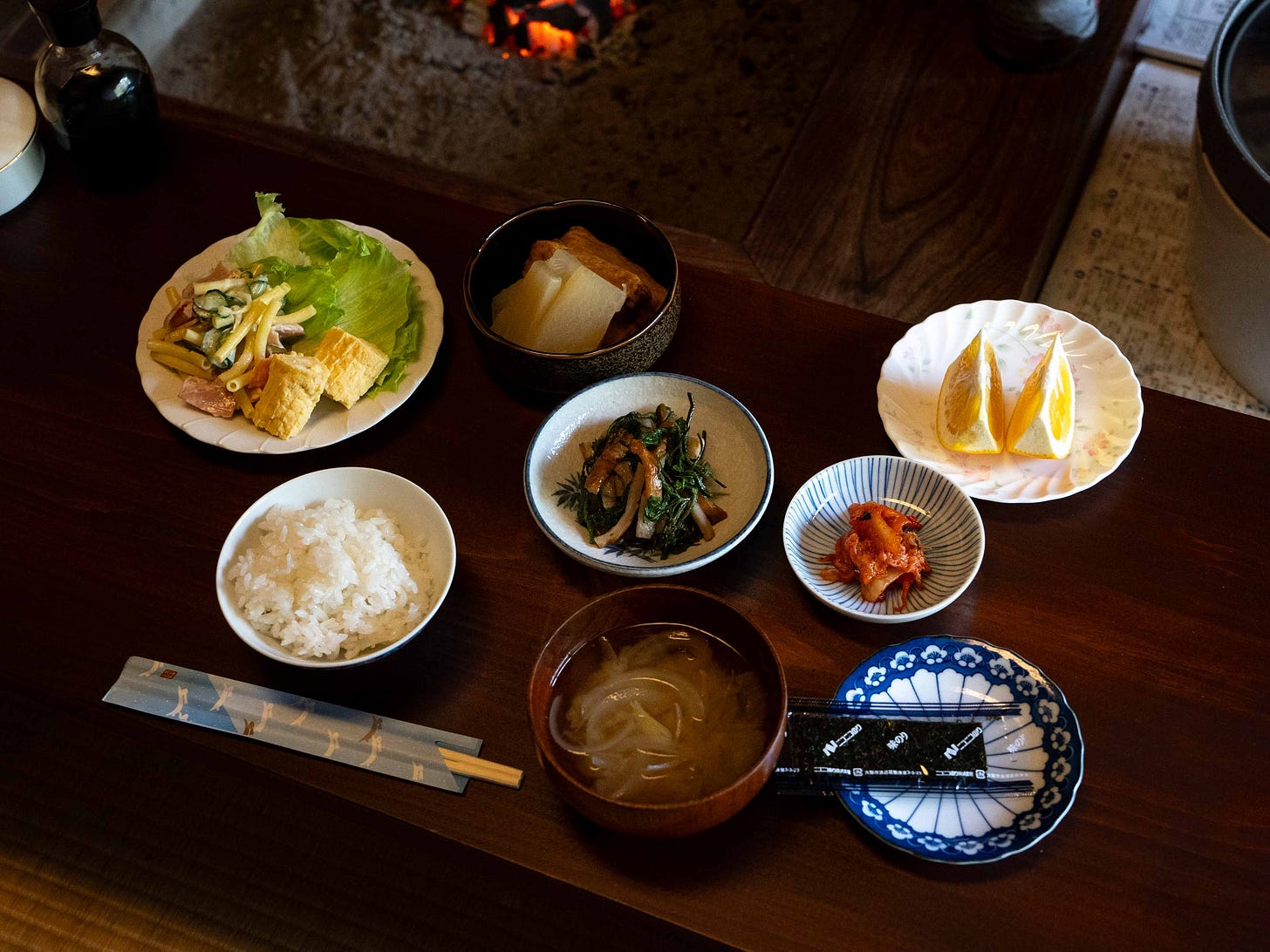
Dishes are grilled, steamed, simmered, and pickled. Textures range from crunchy, tangy takuan pickles; to sticky, fermented soybeans called natto; to crackling strips of nori seaweed to wrap around a bite of rice; to flaky, oily salmon, with crispy, blistered skin. Some dishes are salty, others slightly sweet, and some really get your attention with a face-puckering surprise of sourness. (I’m looking at you, umeboshi pickled plums. Yum.)
Even the plates are a stimulating range of shapes and designs, contributing color and contrast to the table setting. Depending on the season, there might be a little plate in the shape of a cherry blossom or a maple leaf. A wedge of ripe persimmon might add a saturated pop of reddish orange color, rounding out the visual palette of the meal.
Shoveling spoonfuls of cereal doesn’t demand much of your attention. But grazing all of these varied seasonal delicacies necessitates a series of little decisions, as you consider each bite. Should I try a morsel of fern-like mountain vegetables, that appear to have poked through the forest floor just this morning? A tangle of hijiki seaweed, with carrots and deep-fried tofu? A mouthful of creamy Japanese sweet potato simmered in mirin and sugar? What is this, you might wonder, as you slowly chew on some konnyaku (a gelatinous yam jelly). Even if you have no idea what you’re actually eating, you can almost feel the neurons in your brain firing, new connections being made, your entire body perking up.
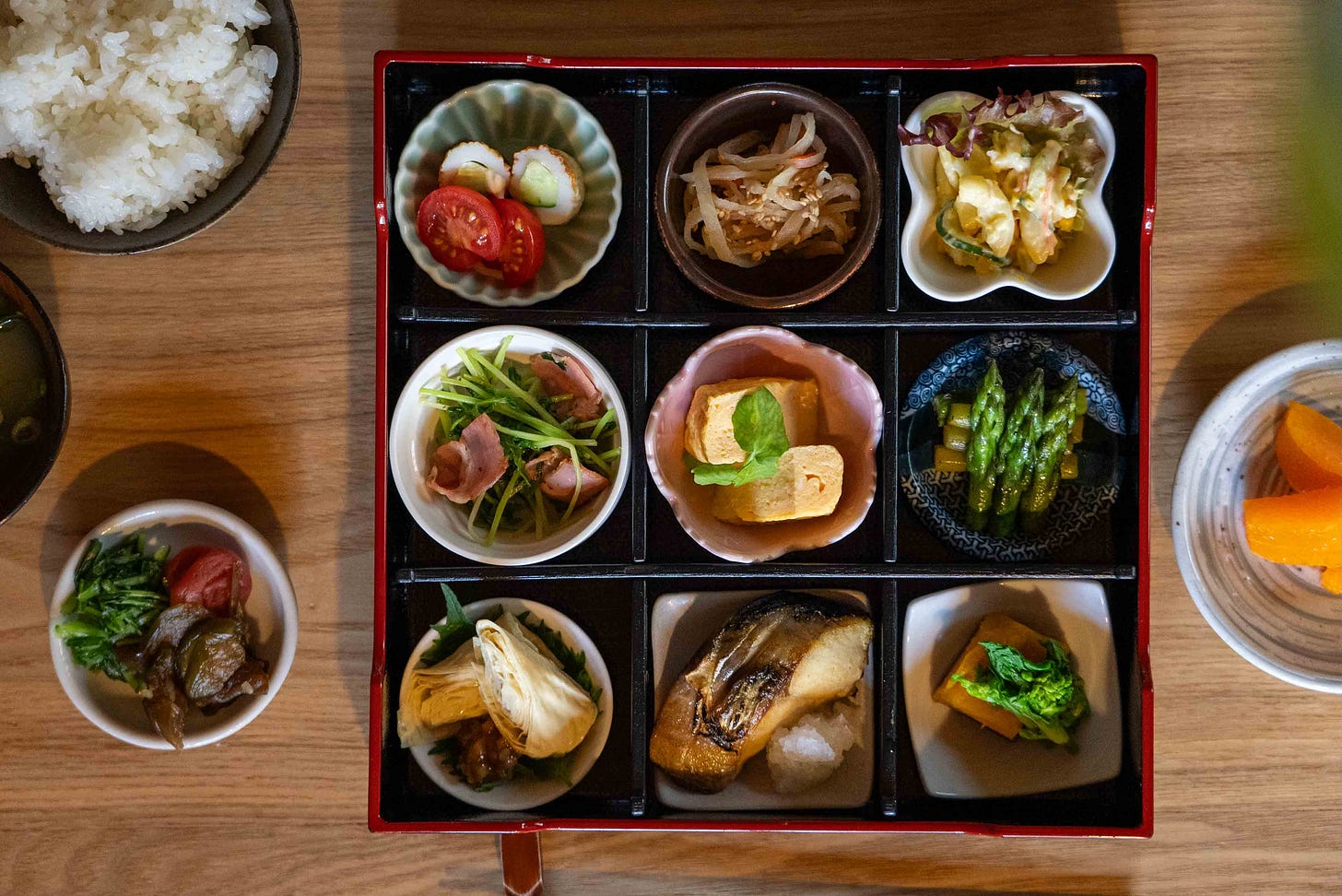
Now you might be wondering, with good reason, who has time to prepare all of these dishes in the morning? While the full-blown ichiju sansai breakfast spread certainly remains the gold standard for breakfast in Japan, fewer and fewer people prepare it on a daily basis. Many families with young children make a point of preparing a healthy and energizing start to the day. Grandmas who have been making this meal for a lifetime have perfected a way to prepare it efficiently, deploying batch cooking and skillful repurposing of leftovers. But young professionals in Tokyo are as likely to subsist on a cup of coffee, a pastry or a piece of thick milk bread toast, or maybe a smoothie. It’s the universal issue of not having enough time in the morning, and of course, a result of women having entered the workforce. Times have changed.
Lucky for the traveler, one of the last bastions of a traditional Japanese breakfast is the dining room of your hotel, family inn, or even budget accommodation. Breakfast is one of the central pleasures of traveling in Japan, something people really look forward to, and a lot of effort is put into doing it right. Even for a Japanese traveler, a beautiful breakfast represents a kind of ideal lifestyle, eliciting a reaction like, “Oh, yes, wow, this is the life.”
Many if not most hotels offer an opportunity to give a Japanese-style breakfast a try. (One hotel where I stayed in Tokyo assumed international travelers preferred a Western-style breakfast but had a set number of Japanese-style breakfasts available by advance reservation at the front desk.) And an overnight stay at a traditional inn or ryokan will likely include a mind-boggling quantity of dishes far beyond the conventional ichiju sansai plate count. But since most dishes only contain a bite or two, even if you polish off every last dish — which hopefully you do! — the meal still feels light, easy to digest, and never leaves you with a feeling of “why did I eat that?!”.
Perhaps you’re one of those people who is just not that into breakfast. I get it. We all have our rituals that make us feel most in our skin in the morning. And if you’re accustomed to not eating breakfast at all, or kickstarting your day with a donut, I can understand how the cognitive dissonance of grilled fish first thing in the morning might make your stomach turn. Then again, have you ever enjoyed cold pizza for breakfast? Is it really that much of a stretch to include the rest of your dinner?
A traditional Japanese breakfast is not an experience you can rush or multi-task your way through. It’s a unique chance to participate in a purposeful and beautiful ritual: nourish the body, recalibrate the mind, and gratefully welcome the morning. Ittadakimasu!
Where in the world was your most memorable breakfast? What are you willing - or not willing - to eat first thing in the morning? Would you be interested in Japanese-style breakfast recipes to try yourself at home? Please respond in the comments, reply to this email, or click on the little heart button if you enjoyed this post (and to help me connect to new readers.) Thanks so much for being here!
👋 O genki de ne,
Julia Morrison

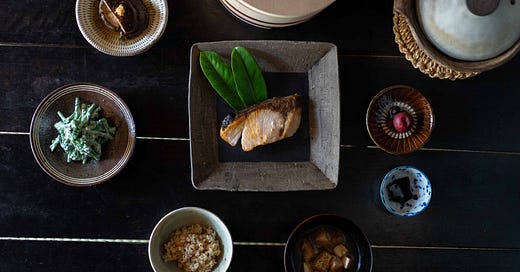




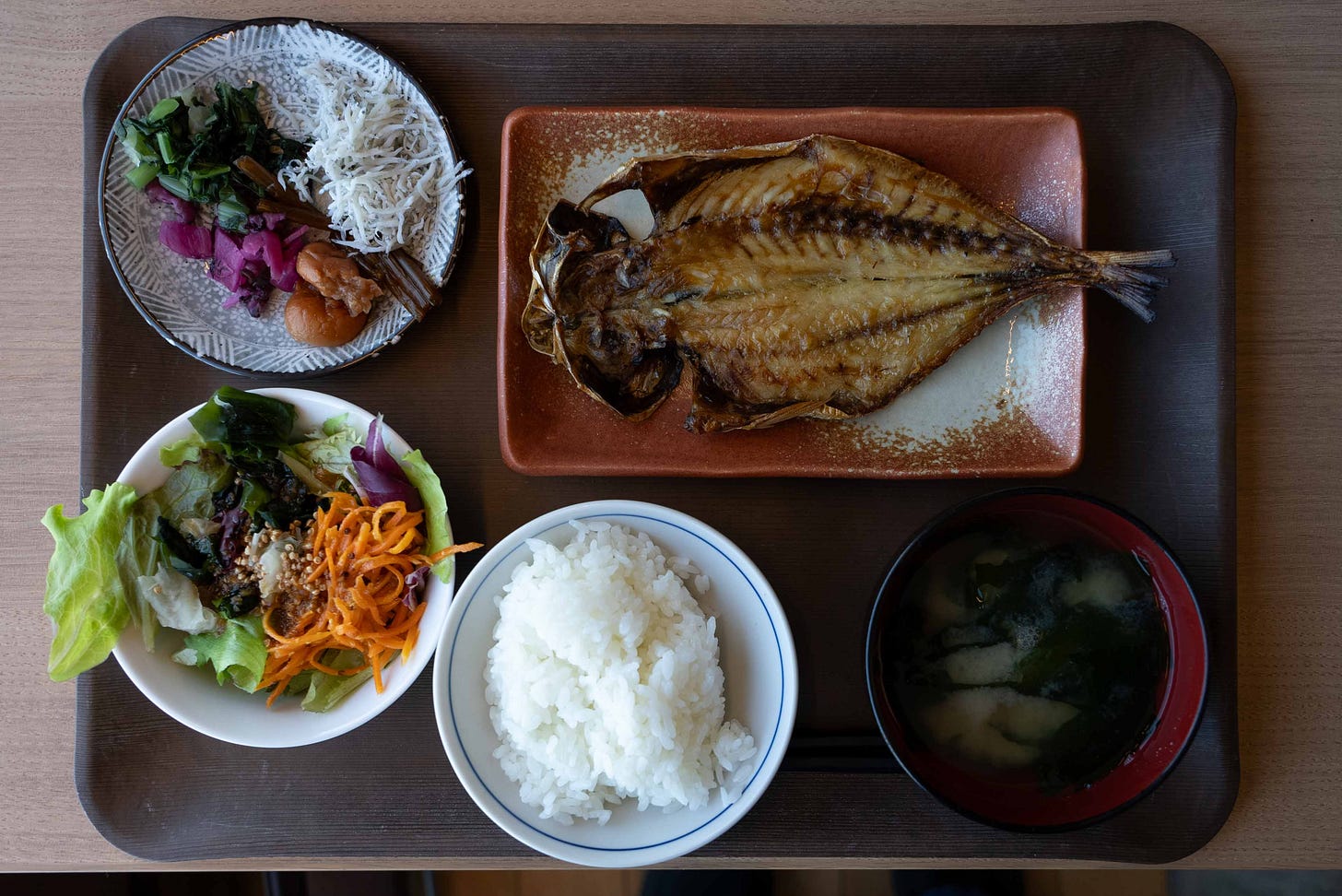
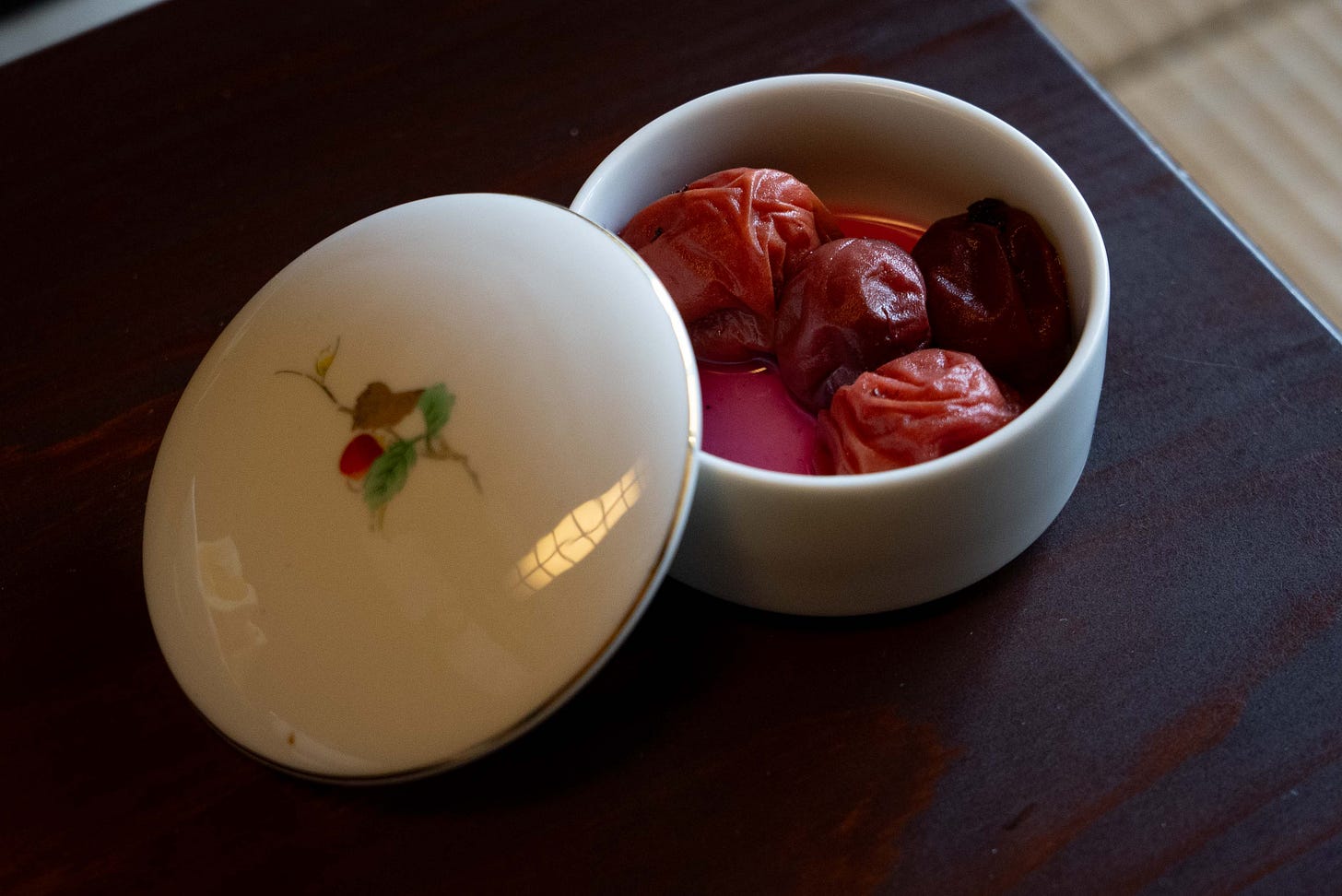
I would also happily have a Japanese breakfast for dinner! I love the idea of small bites of many flavors and textures.
So funny that you wrote this now - we just had our first traditional japanese breakfast a few days ago. Only we had it for dinner and in Las Vegas. Not quite the same. But still very tasty!